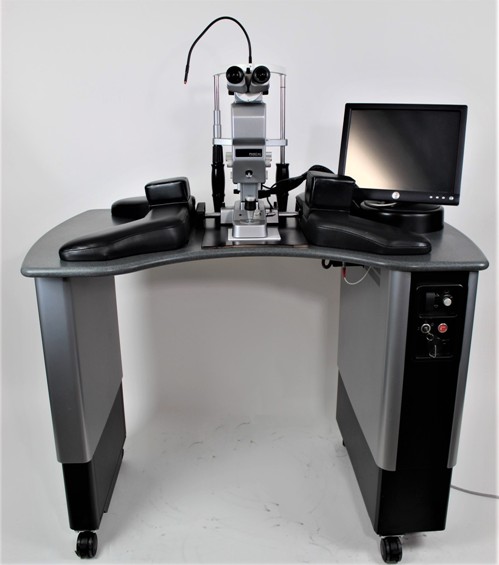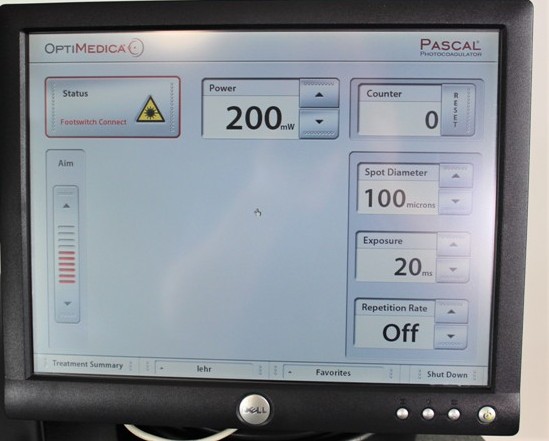Description
Pascal Photocoagulator Green Laser-Optimedica (Topcon) Argon 532-nm
The PASCAL Photocoagulator Green Laser uses a microprocessor-driven scanner that produces a variety of scalable patterns, viewable on a computer screen and selected by the physician.
The laser allows the operator to apply multiple spots almost simultaneously, with a single foot pedal depression, multiple laser burns in a rapid predetermined sequence in the form of a pattern array produced by a scanner.
To achieve this, pulse durations are reduced by nearly a log unit to about 10–20 ms compared with 100–200 ms with a traditional laser. This offers several potential advantages over conventional single spot laser, including increased uniformity and precision of spot placement and reduced pain
When an ophthalmologist is faced with the task of laying down hundreds of photocoagulation spots during a diabetic retinopathy treatment, it can be more efficient to lay them down 25 or 50 at a time. That’s the idea behind OptiMedica’s PASCAL photocoagulator. Here’s a look at how it works.
PASCAL is short for Pattern Scan Laser. It’s a frequency-doubled Nd:YAG solid-state device that fires pulses in the green, 532 nm wavelength.
Where other lasers deliver one spot at a time, through the use of new technology, Pascal Photocoagulator Green Laser lets the surgeon deliver a wide variety of patterns of laser spots simultaneously, Instead of always getting one spot when you push down on the foot pedal, you can get up to 25 spots with one press. You can then complete a case more efficiently.
The laser offers various combinations of spots and shapes for laying down. It can perform such treatments as 2 x 2, 3 x 3, 4 x 4 and 5 x 5 grids of spots, arcuate patterns that look like sections of a circle and macular grid treatments totaling 56 spots that encircle the fovea. It also has a single-spot mode if a surgeon needs to target aneurysms or perform focal macular treatments.
It’s very useful for diabetic retinopathy treatments, which are probably its biggest use, because it allows the delivery of grid and panretinal treatments. It’s also good for retinal tears and branch and retinal vein occlusions
In addition to specifying the number of spots and the shape in which you put them down, PASCAL also allows adjustments to how they’re placed. You can make them closer or farther apart.
Along with the efficiency and time savings involved with laying down groups of spots at one time, the company also thinks this makes for a more comfortable, easily tolerated treatment experience for the patient, who doesn’t have to sit still while 1,000 spots are being made individually.
Phaco & Ophthalmic Equipment Main Page


